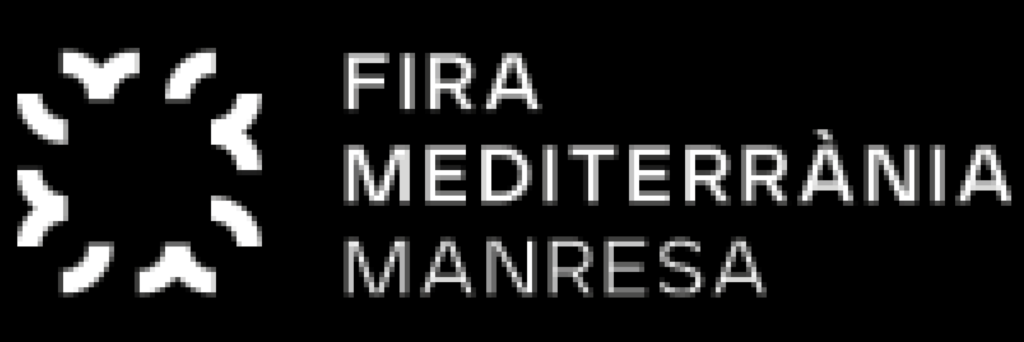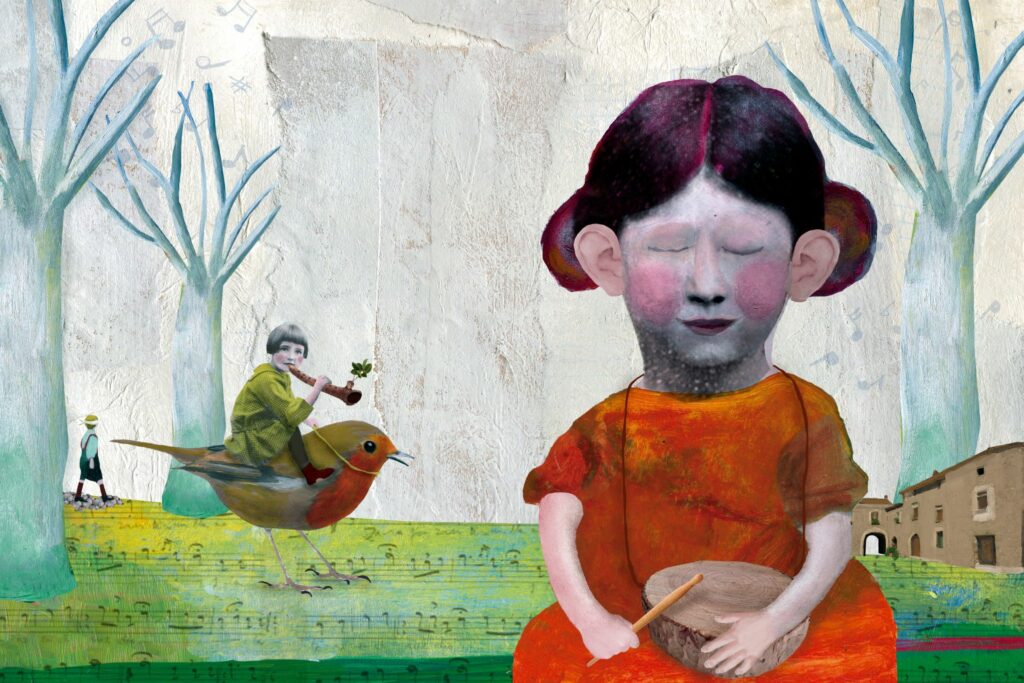
ULLSCLUCS
EDUCATIONAL PROJECT
Selection, musical direction and arrangements
Arnau Obiols
Scene direction
Sònia Gómez
Script and pedagogical proposals
Anna Farrés
Supported by

Close your eyes and imagine a landscape you don’t see but do feel. Are you in the countryside or in the city? Is it summer, spring, winter or autumn? Morning or night? We offer you a walk with your ears wide open to discover our natural and human environment through the sounds and music that are born from these sounds.
Rooted music, many of them rediscovered for the occasion and performed from a contemporary perspective by five musicians who drink from both the traditional world and the most current music.
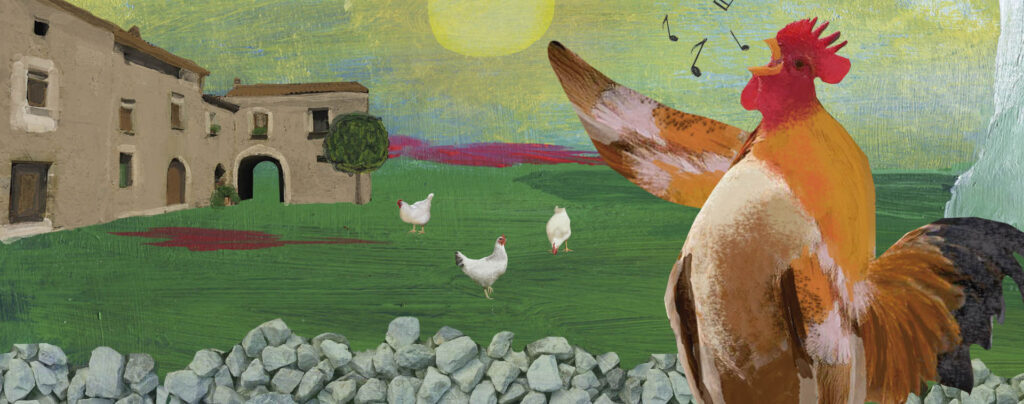
APLEC
Arnau Obiols. Field recording, trumpet, diatonic accordion, baritone saxophone, tabla, square tambourine and vocals.
OUR ROOSTER
Traditional song. Arrangement for voices.
Our rooster is a singer;
sing of the day sing of the day
sing by day and not at night.
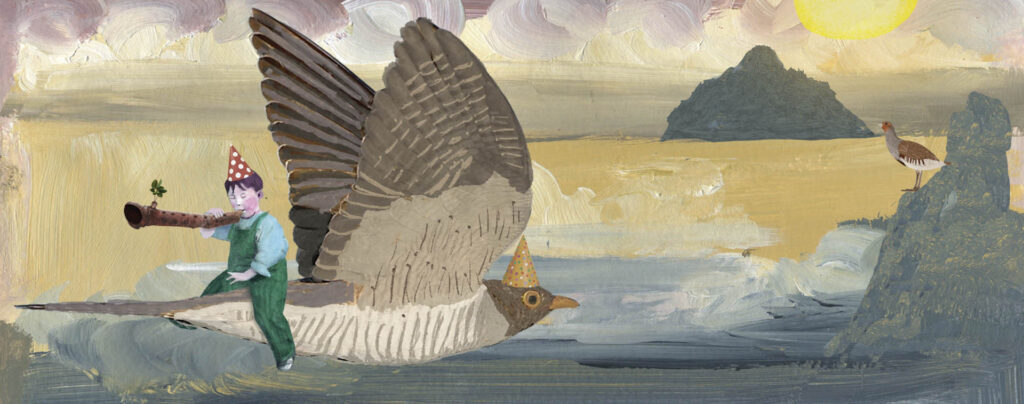
COBLES (FROM CASTELLCIUTAT)
Traditional song. Arrangement for piano, trumpet, baritone saxophone, drums and voice.
CHOREOGRAPHY
And up here on the mountain
the cuckoo sang there.
When the goats make wool,
we will do good.
The partridge sings at dawn,
the partridge on the floor,
the partridge is sad
because he can’t party.
If you ever thought about it
that everyone was flat,
and now you have come to know
that some coasts are there.
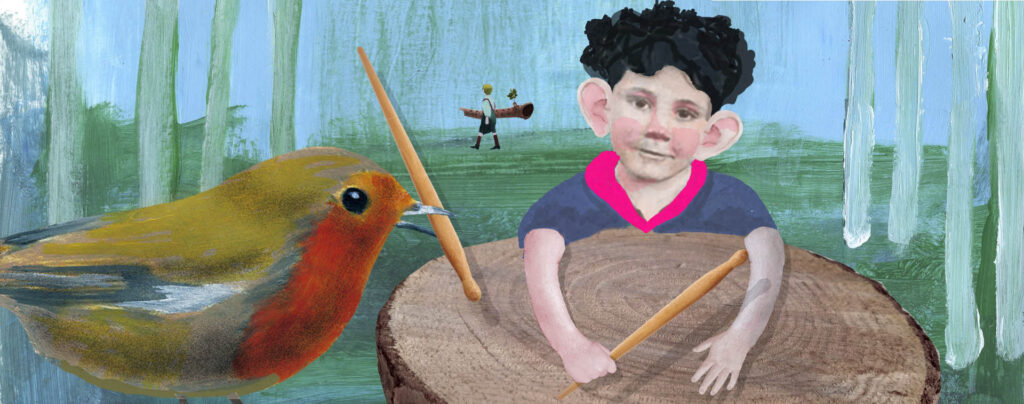
QUEC-QUEREC-QUEC
Traditional song. Arrangement for voices, cracked cane, bottle of anise, tabal, flabiol and drums.
Quec-querec-quec Maria.
Ouec-querec-quec good morning.
Quec-querec-quec I will ask.
Quecquerec-quec et respondré.
Quec-querec-quec do you want to come to the fair?
Quec-querec-quec what would lead there?
Quec-querec-quec lead the cat.
Quec-querec-quec they stole it from me.
Quec-querec-quec who did it?
Quec-querec-quec some donotes.
Quec-querec-quec how are they?
Quec-querec-quec tall and fat.
Quec-querec-quec where are they from?
Quec-querec-quec by the sea.
Quec-querec-quec what are they doing there?
Quec-querec-quec make silk.
Quec-querec-quec what color?
Quec-querec-quec of bad sort.
Quec-querec-quec in white fan.
Quec-querec-quec in black fan.
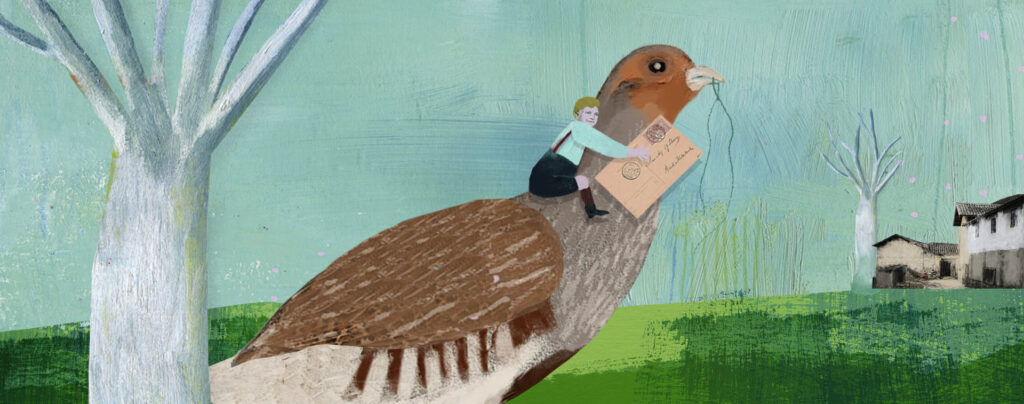
MAR
Improvisation based on field recordings by Pep Pascual.
Solo by Pep Pascual: sea snails.
THE PARTRIDGE FEATHER
Traditional song. Arrangement for tenor, synthesizer, drums and vocals.
If there were three dolls
lumberbigudí, bigudon, dondeta,
lumberbigudí, bigudeta, don,
that all three embroidered silk,
lumberbigudí, lumberbigudon,
lumberbigudí, bigudeta, don.
The king’s son was walking there,
he already asks them for a silk thread.
-What do you want to make of the silk thread?
-I want him to make a bow.
-Why do you want the bow?
-To catch a partridge.
-Why do you want the partridge?
-To rip off a plumb line.
-What do you want to do with the feather?
-I want to write a letter on it.
-What do you want to do with the card?
-I want to send it to the sweetheart.
-What do you want to do with the love?
-I want to give him a hug.
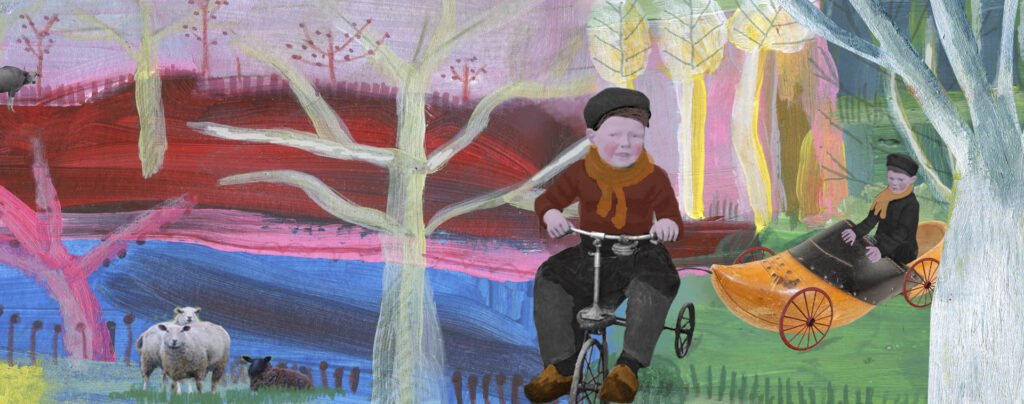
GOODBYE VILA DE RIPOLL
Traditional song.
Arrangement for trumpet, electric guitar, diatonic accordion, drums, bass clarinet and saw.
RAMAT
Improvisation based on field recordings by Arnau Obiols.
Solo by Arnau Obiols: rabequet and voice.
IF I HAD SOME NEW CLOGS
Traditional song. Arrangement for trumpet with mute, diatonic accordion, cracked cane, trico-traco, tabal, clogs, rattlesnakes, shells, hands and voices.
If I had some new clogs (bis)
I would look after oxen,
que lententí garringué garringaire,
garringué it, descend it,
que lententà garringau garringà.
We are never saved from oxen (bis)
used to save sheep,
que lententí garringué garringaire,
garringué it, descend it,
que lententà garringau garringà.
And the wolves have eaten them all (bis)
And shepherdess, where were you?
que lententí garringué garringaire,
garringué it, descend it,
que lententà garringau garringà.
And I was with the shepherds (bis)
who embroidered handkerchiefs,
que lententí garringué garringaire,
garringué it, descend it,
que lententà garringau garringà.
And one for me and one for you
and another for my beautiful,
because he was so drooling,
que lententí garringué garringaire,
garringué it, descend it,
que lententà garringau garringà.
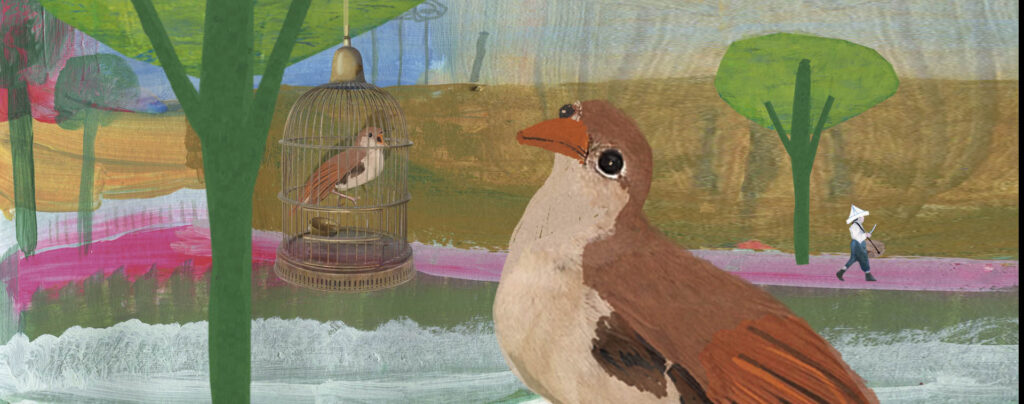
LO ROSSINYOL
Traditional song. Arrangement for synthesizers, classical guitar, bird calls, drums and vocals.
The nightingale cannot sing being alone,
being all alone, being all alone.ma
The nightingale can’t sing that there aren’t two of them;
two to one all alone,
as he will sing, the nightingale being all alone, being all alone.
The nightingale cannot sing that there are not three of them;
three to two, two to one all alone,
as he will sing, the nightingale being all alone, being all alone.
(Up to ten).
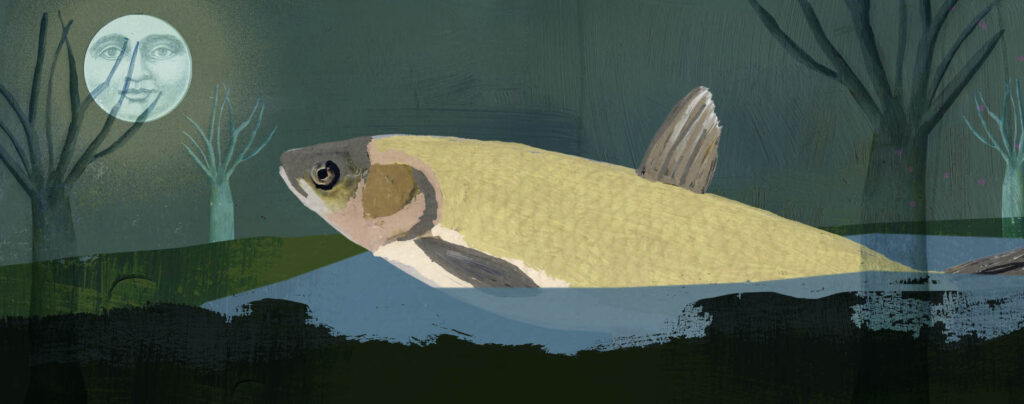
NIGHT
Improvisation based on field recordings by Arnau Obiols.
Solo d’Alba Careta: trumpet with mute
SERENE NIGHT
Traditional song. Arrangement for trumpet, synthesizer, diatonic accordion, drums, claims and voice.
The mornings are cool
of serene night,
of serene night.
It’s not in any aubaga no,
nor is it sunny land,
but by a river,
river of water flowing down.
The mornings are cool
when the moon turns,
when the moon turns.
It’s not in any aubaga no,
nor is it sunny land,
but by a river,
river of water flowing down.
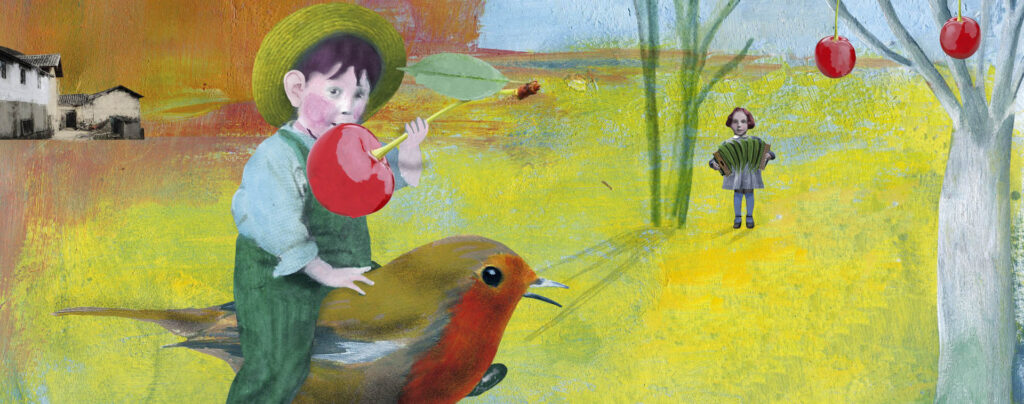
THE THREE DALLAIRES
Traditional song. Arrangement for trumpet, electric guitar, diatonic accordion, clarinet, baritone saxophone and drums.
CHOREOGRAPHY
SPRING
Poem Sweet slavery, Pau Riba (from the disc Amarga crisi).
Solo by Carles Belda: voice.
INTRO MOIXONS
Music by Xesco Boix. Based on What Jacint Verdaguer’s Birds Say.
Solo by Pep Pascual: voice.
MOIXONS (CATALAN MIMOLOGISMS)
Arnau Obiols. Voices, tabal and hands.
All:
Intro / Swallow: Get up, get up, except in the morning, let the water go down clear and the sun wants to rise. And you are still in the lliiiit !?
Tall / Oriol: Revive! Are the cherries good, Nicolau?
Coda / Nightingale: The mistress has a soft ass; the soft ass, soft, soft, soft, had the mistress!
Theme:
Mallerenga car. / Type: Tin-ti Pere, Tin-ti Pere, Tin-ti fort! All summer, all summer! ”
Lost: Cache, cachet, cachet, blue sky and dry earth!
Parldal: Jau, jau! turn around and go!
Gaig: Go down! go down!
Dove: Ruc-ruuuc-ruc!
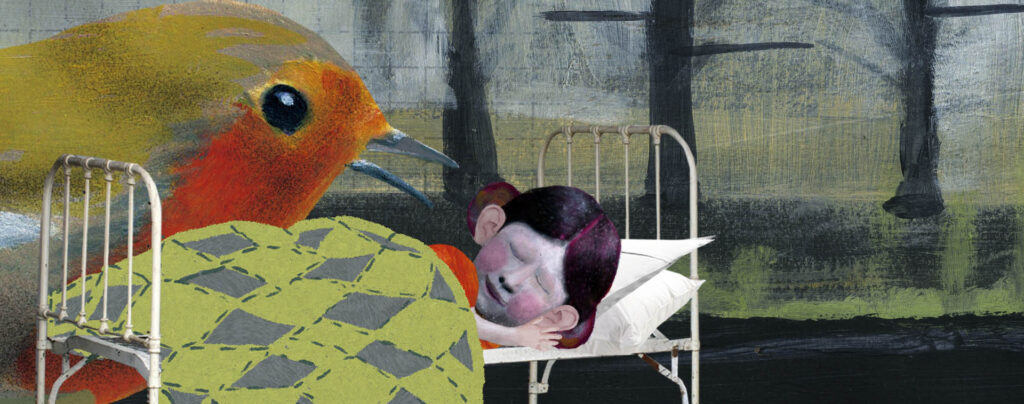
NEW
Improvisation based on field recordings by Arnau Obiols.
Solo by Juliane Heinemann: electric guitar.
SON, SON, VINE, VINE
Traditional song. Arrangement for electric guitar, synthesizer, drums and vocals.
Son, son, vine, vine,
come to Marcelina’s eyes.
Sound, sound;
son, son;
sonnet came.
The sound, the sound is gone,
She’s gone under the blanket.
Sound, sound;
son, son;
sonnet came.
Tomorrow morning
it will be down here this pillow.
Sound, sound;
son, son;
sonnet came.
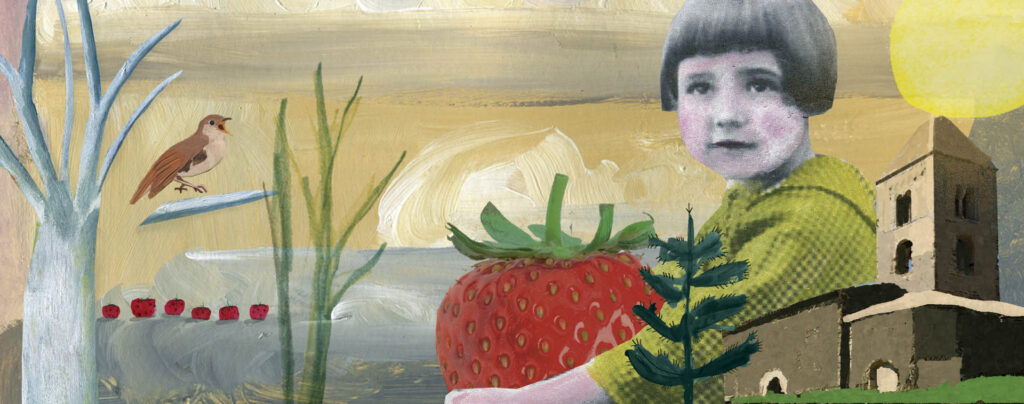
ROUND COBLES
Traditional song. Arrangement for synthesizer, diatonic accordion, tenor, cracked cane, tambourine, hands, voices and field recordings from the Fonoteca de Catalunya.
Florida carnation
look out the window,
that I want to read you a letter
with your radiance.
Moraduix knocks on the door
low carnation to open;
for the love of strawberry
carnation died.
If I were orandeta,
summer swallow,
in the bed you sleep in
he would go and make the nest there.
What taller windows
always with admirers;
outside the air runs
and inside my love.
–
I have planted strawberries
in the month of July;
I have sown them clarosetes
and the sun has died for me.
The boxes are made in the reclots
and in the mountains the rosemary;
now I have a safe time
maid if you want to come.
Around this house
the laurels are in bloom,
and in the faces of the girls
the angels are written there.
It is raining and snowing in the square
and in the bell-tower there is sun,
and on Mary’s balcony
a nightingale sings.

THE GRIVA, THE THUNDER AND THE ROOSTER
Traditional song. Arrangement for trumpet, ukulele, diatonic accordion, bass clarinet, drums and vocals.
Note: In the Pallars dialect it is called ‘gay’ to refer to the jay, a bird closer to the thrush and thrush than the domestic rooster. It could well be that the song, collected in the Pallars, refers to this bird and not to the rooster.
I go by this torrent;
sing the thrush,
sing the thrush,
I go by this torrent;
sings the thrush, the thrush and the rooster.
There are three apples in the apple tree;
that of three, one,
that of three, one,
There are three apples in the apple tree;
that of three one fell.
I go by this torrent;
eat the apple,
eat the apple,
I go by this torrent;
eat the apple,
the thrush and the rooster.
And the thrush sings like this:
The other two,
the other two,
And the thrush sings like this:
The other two for me.
I go by this torrent;
sing the thrush,
sing the thrush,
I go by this torrent;
sings the thrush, the thrush and the rooster.
CREDITS
Carles Belda diatonic accordion, guitar, percussion * and voice Alba Careta trumpet, percussion * and voice | Juliane Heinemann guitar, synthesizers, percussion * and voice Arnau Obiols drums, percussion *, synthesizer, rabequet and voice Pep Pascual saw, lures, sea snails, whistles, percussion *, toys and voice Manu Sabaté baritone saxophone, clarinets, tenor, flabiol, percussion * and voice | * percussions: square tambourine, tambourine, cracked cane, bottle of anise, trico-traco, tabal, rattlesnakes and clogs | Jan Valls and Ferran Conangla recording | Jan Valls digital editing and mixing Ferran Conangla mastering | Inge Nouws illustrations | Jan Valls and Arnau Obiols artistic production | Violeta Amargant Head of the Educational Service of L’Auditori | Glòria Mas Artistic coordination
Sources: Materials of the Catalan Traditional Music Sound Library, theWork of the Cançoner Popular de Catalunya, Walk the paths of the songbook d ‘Artur Blasco, Tweets from popular culture from Josep Espunyes, Bird voices / Beautiful birds from Celdoni Fonoll.
Album recorded from 17 to 19 November 2020 in Room 2 Oriol Martorell, L’Auditori de Barcelona.
A co – production with
